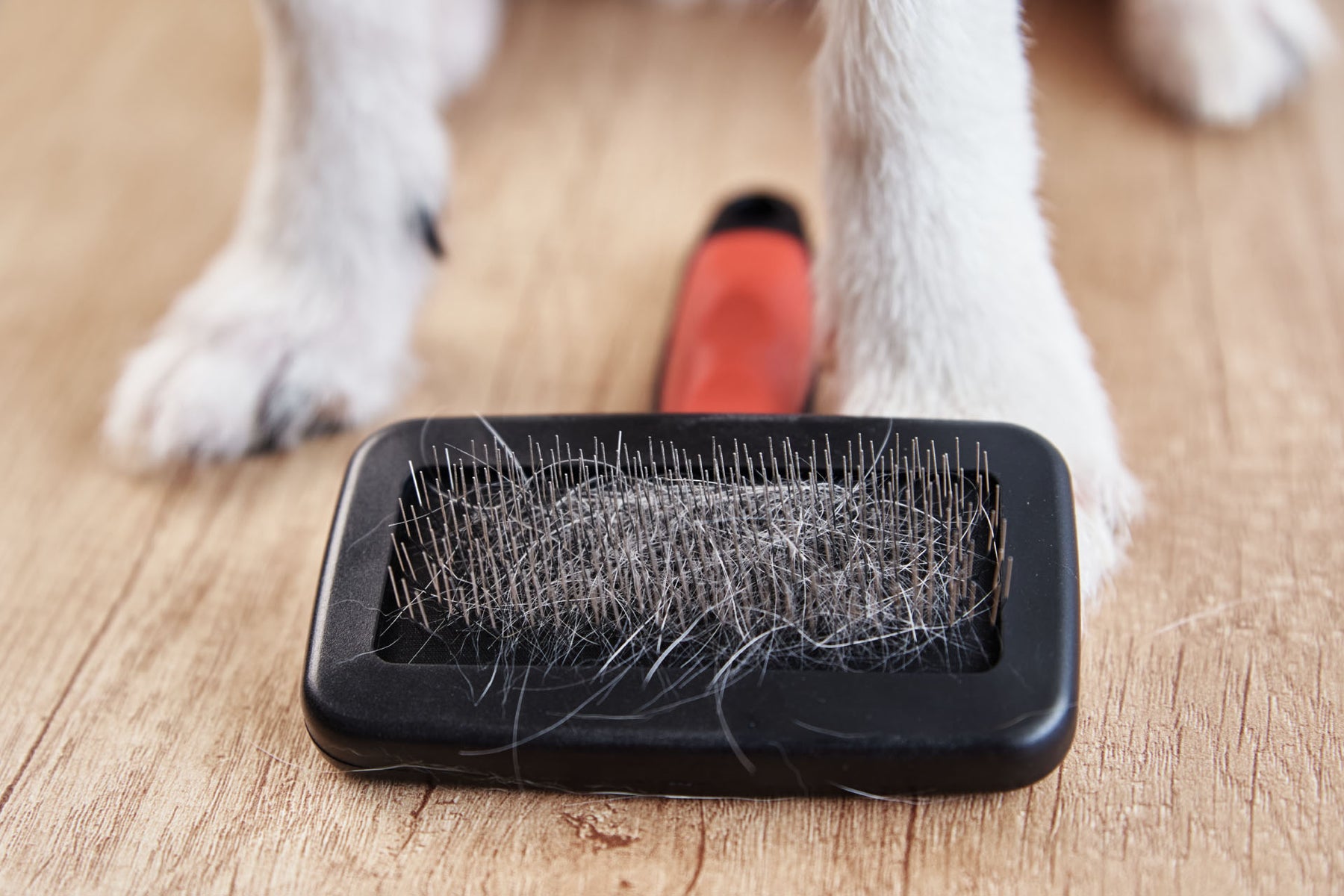Mon-Fri 9am-5pm

Guest Post: What Brush Is Best For My Dog?
Today we’re featuring a guest post from Simply Sharp to answer all your questions about brushing your dog between visits to the groomer – and how to choose the best brush for your dog.
“Even if you’re planning to leave most grooming tasks to the groomer, there’s no escaping brushing your dog! Regular brushing is an essential part of your dog’s healthcare, and done right, it’s a relaxing pamper session and great chance to bond. So that’s why it’s crucial to make sure you’ve chosen the right tool for the job.
What brush is best for shedding?

Shedding is normal. That’s probably not news to any dog owner! When your dog sheds, they lose all their dead or damaged fur to allow new, healthy fur to grow in. Some dogs shed seasonally, some throughout the year, but all dogs do it!
If you’d like to keep your home, furniture, and person free of as much shed hair as possible, regular brushing is one of the best ways to reduce how much your dog sheds. We’d recommend giving the Pet Teezer De-Shedding Brush a whirl. Remember Tangle Teezer – the groundbreaking brush for human hair that detangles without pulling? The same company turned their hands to grooming tools to create the Pet Teezer! It uses the same two-tier teeth technology to reach through to your dog’s undercoat and pick up loose hair as you brush.
Got a seriously heavy shedder? Perhaps the Groomi Tool will solve your woes – it’s a wide, shallow-toothed comb that reduces shedding by up to 95%! The short teeth means that it won’t catch your dog’s skin, but that doesn’t make it any less effective! It picks up piles of dead hair and dandruff from your dog’s coat. Check out how much dead hair comes away with just a quick brush in this video!
What brush is best for poodles?

Or Doodles, or Bichon Frises, or water dogs, or… Brushing is crucial for curly-coat breeds, because they’re prone to matting and tangles – as any human with curly hair can tell you!
A slicker brush is going to be your best friend in grooming your curly-haired dog. A slicker brush penetrates right down to a dog’s undercoat for a good, thorough groom. It’ll remove dead hair, skin, and even small, loose mats.
Matting can be irritating and painful. It causes a number of skin problems. Even light matting is going to hurt your pet to brush out! Use a detangling spray, like DeZynaDog Amazing Trix, and try to loosen the mat with your fingers first before diving in with the brush. Be gentle!
If your dog has a serious mat, it’s cruel to try to brush it out. Do them a favour and take them to a groomer to be shaved – and try to brush them more often in the future! If your dog's skin is irritated after shaving, Leucillin Antiseptic Skincare is an effective, alcohol-free topical treatment that’s super soothing and safe for even the most sensitive skin.

Mop dogs, like the Komondor, don’t need brushing – their coat will 'cord' naturally. They do require a LOT of other maintenance though, but we’re sure you’re prepared for that if you’ve taken one on!
Should I brush my puppy?
Yes, definitely, although they probably won’t want to sit still for it! It’s important to get your dog used to grooming at a young age. We even recommend brushing a puppy a little more often so that you can keep each session short. It’s crucial to make grooming fun for your puppy! Be gentle and encouraging.
The Pet Teezer Puppy Brush is the perfect tool for the job, with a smaller size and soft, flexible teeth for a gentle groom.
When should I brush my dog’s hair?

There’s no set-in-stone frequency for brushing your dog. Some people say shorter haired breeds can get away with a brush every few weeks, some say once a week – some people even say you should brush at least every other day, regardless of coat length.
One thing everyone agrees on, though, is that longer haired dogs need brushing more often than shorter haired breeds.
How do I brush my dog?

After bath time is a good time to brush your dog – you can even brush while you bath by using a KONG ZoomGroom as a shampoo brush to work the product through their coat. The thick silicone teeth will stimulate capillaries and natural oil production for healthy growth and a shiny coat.
Let your dog see and sniff the brush before you start, to help set their mind at ease. Check for tangles and mats before you start brushing, so you don’t accidentally pull on one while you go. Always brush in the direction of the hair growth, using firm, short strokes – without applying too much pressure.
Long haired coats are prone to tangles, so start with a spritz of detangling spray and part the hair into sections. You might want to use hair clips for this.
Most importantly – make it a relaxing, enjoyable time for your dog. That way. they won’t make a fuss next time you need to brush them!”
Did we answer all your questions about dog brushing?
Simply Sharp provides professional sharpening services and grooming supplies both locally and nationally. They’re a team with many years of collective experience, here to meet the diverse needs of customers in a number of industries, including pet grooming, equine care, and hair dressing.





